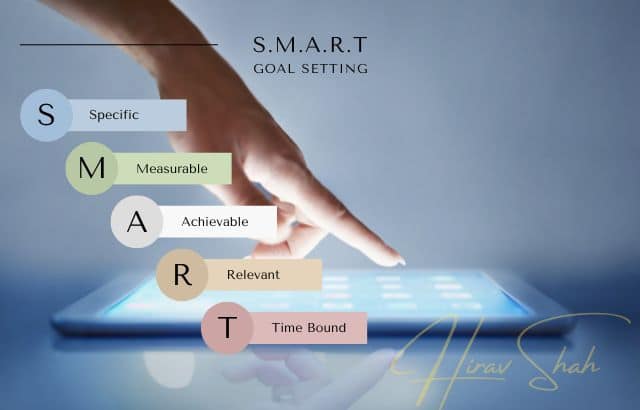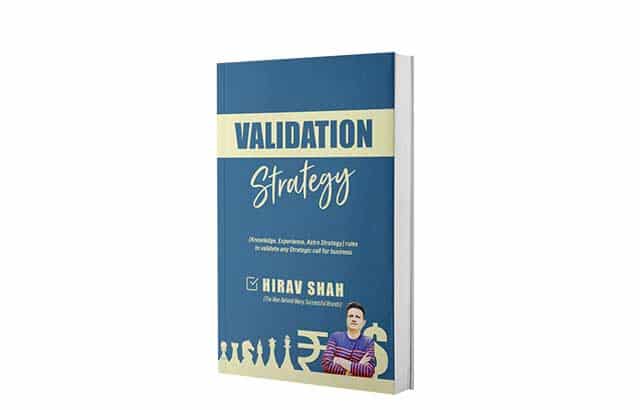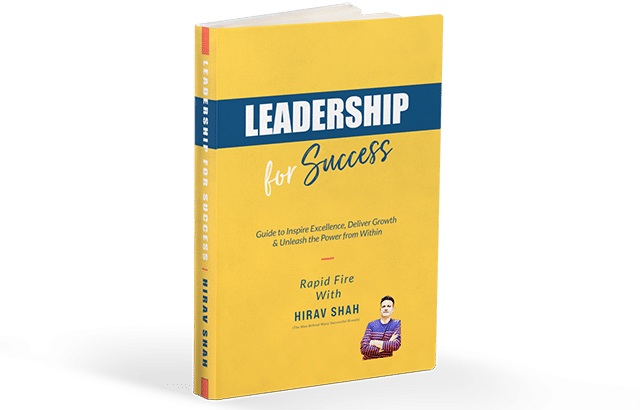Positive thinking can have a powerful impact on your mental and emotional well-being. By identifying your weaknesses and uncertainties, you can replace negative self-talk with positive words and practice beneficial habits to cultivate a more optimistic outlook on life. Here are seven habits to help you develop a positive mindset.
Have you ever wished to be more positive? Have you ever been frustrated or irritated by the negativity that your thoughts have apparently imposed on you? In Hirav Shah’s opinion, we’ve all been there, but the great news is you can do something about how you actually feel. You see, the emotions you have are there because of the thoughts that precede them. Changing your thoughts is very similar to changing any of your habits. If you want to become minimalist or start eating healthier, it all starts with the first step.
Hirav adds, “And this is probably going to be tough at first because you are trying to modify something that your body is accustomed to and also you have accustomed to. However, trust me after 2 to 3 weeks, you can begin to feel comfortable in the new you and you will be really happy with the results.”
Table of Contents
What is Positive Thinking ?
Positive thinking is the combination of emotion, mental strength and the power of Certainty. Positive thinking is the idea that you can change your life by thinking positively about things. Increasing the positivity in your life is simple, but not easy. You have to take responsibility and make it happen because no one will do it for you. If you think reverse of negative thinking it can give productive results.
Don’t just Think Positive – Transform your MINDSET with Astro Strategy, the Certainty of Success
How to benefit from Positive Thinking ?
Positive thinking is all about mastering your mental strength, emotions and certainty. Hirav Shah in his words decodes the act of being positive. He explains the process you can follow to change your thoughts and overload your life with positivity: Here are the 7 ways to transform your mindset.
1. Read books that inspire
“Read books that inspire, encourage, and motivate you. It does not matter if you already know what the book is. What matters is that you feed your mind with positive and inspiring material at regular intervals. The more time you can spend in the land of a positive mindset, the better. You gradually increase the amount of time you are positive. And if you continue to do so, you will eventually become one of those happy and positive people who can handle any adversity.”
2. Listen to good thoughts/music/audio programs

“The second thing I personally would really like to do when I walk around, wash dishes, or clean the house to listen to audio programs. Some great authors that I personally appreciate the sound of water or spiritual songs as they uplift my spirit. They are all old times in self-help, and they know what they are talking about. Even listening to 30 to 40 minutes a day will make a big difference in your life in a year.”
3. What can I learn from this

“While this may seem too simplistic, most people do not, that is, focus on positive rather than negative. Most people focus on problems encountered instead of solutions. It has been shown that most of our worries do not even happen. This means that you worry and that you feel stressed for no reason.”
The next time you feel the negativity, turn it over and think about the positive side and what you can do about it. For example, instead of asking “Why am I?” Or “Why am I so unlucky?” Ask yourself “What can I learn from this?” And “How can I change that?”
4. Release and feel lighter

“There are great ways to liberate negative thought patterns and negative beliefs. I recommend you try yoga. The more negativity you can free from your more peaceful life you will feel inside and the more positive you will be.”
5. What habits do you have right now

“What habits do you have right now that cause negativity in your life? What would your life look like if you started to change them? When we make the decision to change a habit, it happens almost by itself, but we must be determined to do so.
As I said above, changing your thoughts is like changing any habit in your life. It will not be easy, but again, feeling bad all the time is not really a walk in the park.”
6. Objectives and goals

“The majority of people usually don’t set goals. I know it can be scary to decide where you want to go, and you want to leave your options open, but nothing happens before you are clear about where you want to go and what you want to do. It does not matter if your goals change. In fact, this is normal, and one of the reasons why you should continue to change your goals as the seasons change.”
One should use S.M.A.R.T techniques, which in my opinion is the best way to set goals, which means:
- Specific
- Measurable
- Feasible
- Realistic
- Timely
Your goals will give you focus and purpose, so be sure to set goals in every area of your life. The most common areas are health, relationships, career, and personal development.
7. Follow your Passion
“I have noticed that since I began to follow my passion and to move towards the life of my dreams, the positivity of my life has considerably increased. Most people do things they do not want to do, and they do not even take a step towards research and pursuit of their passion.”
“Don’t let this be you. Go after your dreams, even if it means only being able to put aside 10 minutes a day. If you start today, you can build upon what you have, but if you keep putting it off, it will never happen.” Discovering your inner style also helps to understand your passion.
Conclusion

Hirav Shah concludes by saying that increasing the positivity in your life is simple, but not easy. You have to take responsibility and make it happen because no one will do it for you. When you feel lost and unveiled, do always remember and see the bigger side of the picture as you reinforce your might and remember how far you have reached from a list of uncertainties.
Through personality development classes, soft skill development, a change of pace, and proper strategy based on astrology will help you mitigate your developments and helps you prosper into a better human being.
“वक़्त आपका है… चाहे तो सोना बना लो, या चाहे तो सोने में गुजार दो… बदल जाओ वक्त के साथ, या फिर वक्त बदलना सीखो… मजबूरियों को मत कोसे, हर हाल में चलना सीखो… वक़्त आपका है”
Positive Thinking FAQs

Can Positive thinking change your life ?
Yes Positive thinking can change your life.
What is one way of Positive thinking ?
Start your day with positive mindset
Why Positive thinking is important ?
Because it can give positive impact on mental strength and emotional strength.
How do you train your mind to think positive ?
First you need to identify your weaknesses, bad habits and uncertainty. Once you recognize these, you can replace with positive words and positive habits.












